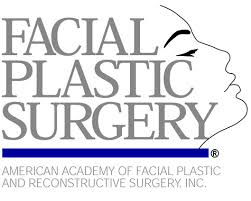Otoplasty
Ear plastic surgery (otoplasty) is performed on individuals with protruding ears. Ears that stick out too much can attract negative attention to the face and can distract the viewer from appreciating the more attractive features of the face. Children with protruding ears may be teased in school, and adults will often avoid hairstyles that expose the ears. Otoplasty is also known as ear reshaping surgery or ear pinning surgery.
What can otoplasty achieve?
The ear cartilage can be molded and secured into a more aesthetically pleasing contour through hidden incisions behind the ear. The results of otoplasty are permanent.


Before After
Otoplasty (ear reshaping surgery) by Sam Naficy, MD. * Individual results may vary.
Why choose a facial plastic surgeon to do my otoplasty?
Although most plastic surgeons today perform ear and facial plastic surgery, very few actually limit their practice to specialize in the face. In fact, most plastic surgeons spend the bulk of their time performing liposuction, breast procedures, and tummy tucks.
Dr. Naficy's practice has been 100% devoted to rhinoplasty and facial plastic surgery for the past 18 years. This is why Seattle doctors and patients have voted Dr. Naficy one of the top plastic surgeons for the face. Patients from the entire globe seek Dr. Naficy's expertise and he has many patients flying in for surgery both nationally and internationally.
Otoplasty Photo Gallery
You may wish to browse through the gallery of representative before and after otoplasty pictures. Click on any of the thumbnails to enter the slide show. All ear plastic surgery procedures were performed by Dr. Sam Naficy.
* Individual results may vary.
What type of anesthesia is used?
A number of anesthesia options are available and your anesthesia provider will discuss with you which one is most appropriate for your health status and procedure. Some procedures require general anesthesia, while others may be done with IV sedation. With either, your heart rate, blood pressure, breathing and oxygen levels are monitored continuously by your anesthesia provider.
General anesthesia means that you are completely asleep for surgery and the placement of an intravenous line and a breathing tube is required. Frequently, numbing medication is also placed during surgery by your surgeon.
IV sedation is also called “monitored anesthesia care” or MAC. This involves receiving sedation and pain medication through an intravenous line (IV). At the beginning of the procedure, when you will be the sleepiest, your surgeon will be placing numbing medication in the area of the surgery. Once the area is numb you will require less sedation and pain medication but you will continue to receive enough medication to keep you sedated and comfortable during the entire procedure. During your surgery you may be receiving oxygen. Airway devices may be placed during IV sedation to keep you breathing normally.
Anesthesia guidelines [21kb PDF]
What is the recovery like?
There is usually a need for prescription medicine for the first 1-2 days to minimize discomfort. A fluffy compression dressing is worn for the first day, after which removable light pressure dressing is applied. The ears may be swollen and discolored for one week after surgery.
Post-operative care instructions [12kb PDF]
I am interested! What do I do next?
If you are considering this procedure we encourage you to complete this Surgical Consultation Intake Form. Dr. Naficy will tell you whether you are a suitable candidate for this procedure and inform you of the potential risks of the otoplasty procedure. There is great variety in shapes of the ear so that each procedure must be custom tailored for the best possible result. You will also have a chance to view before and after photo albums of his patients who have undergone procedures similar to what you are considering.







